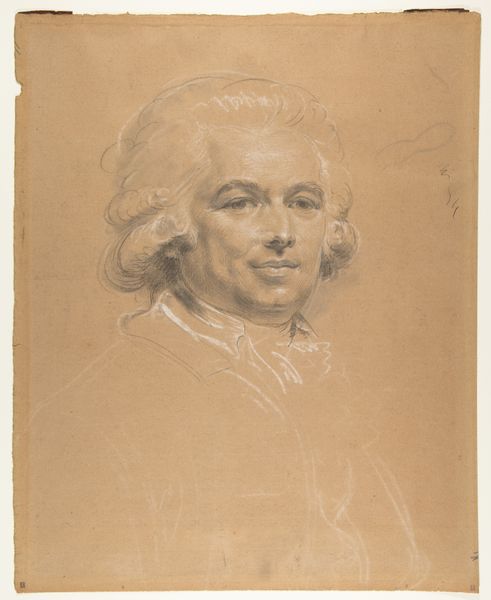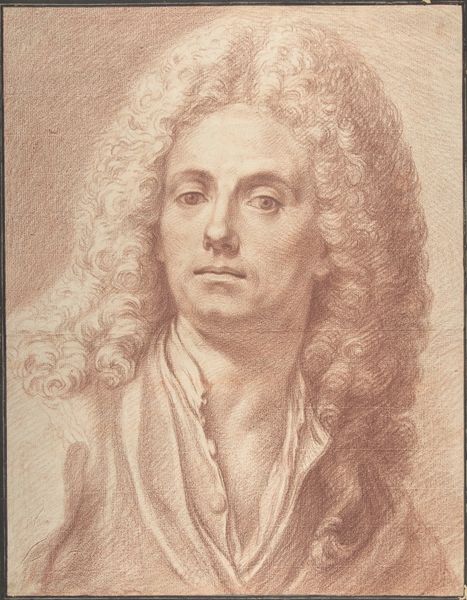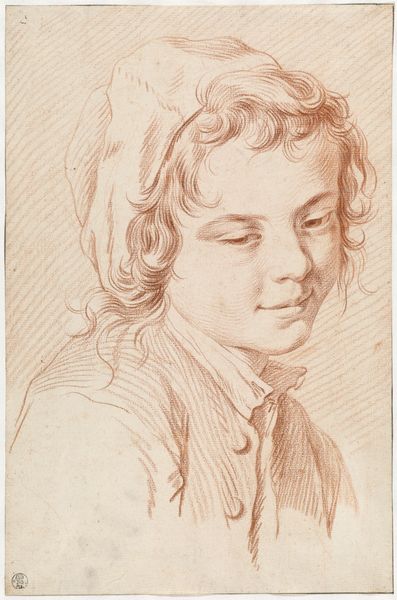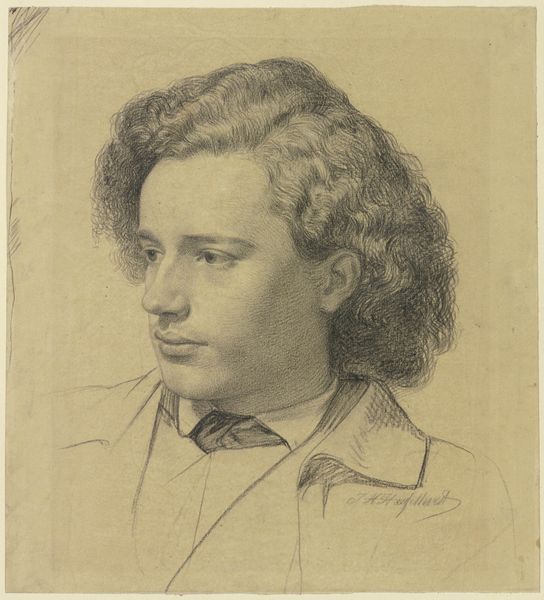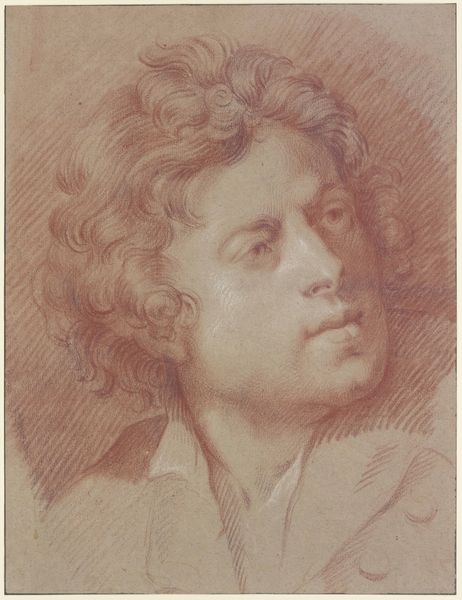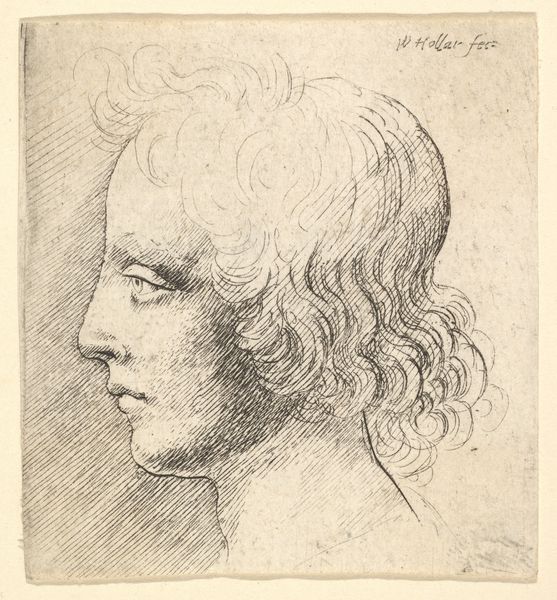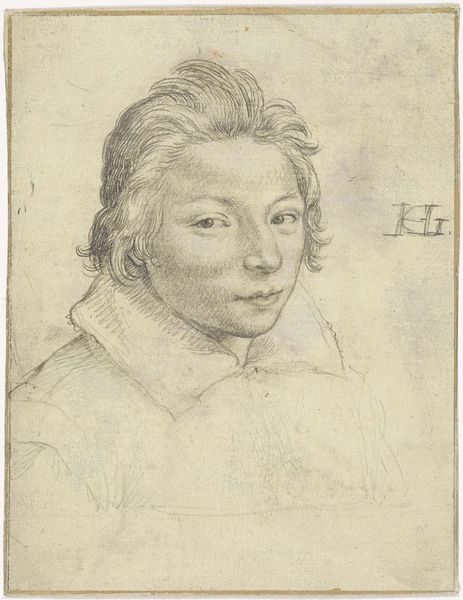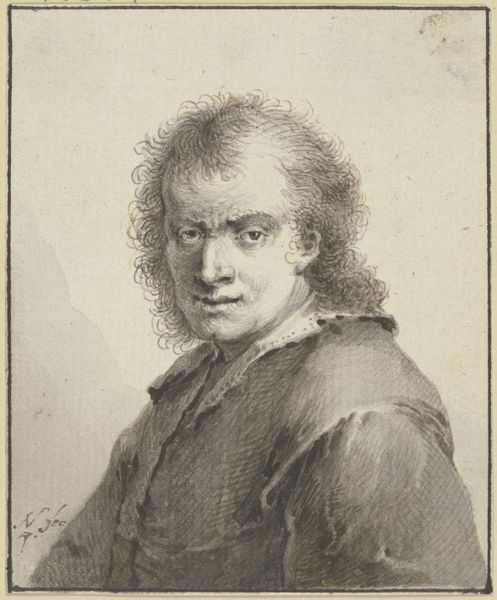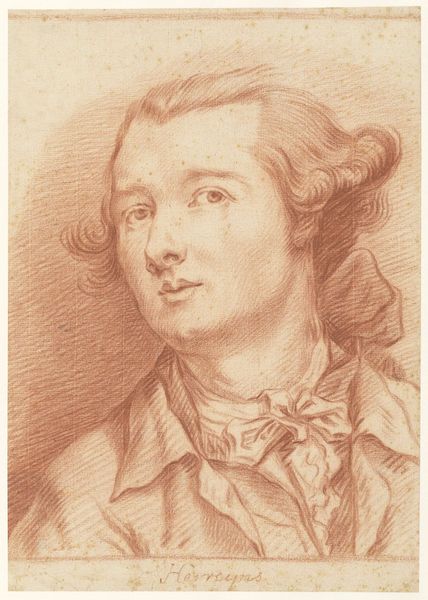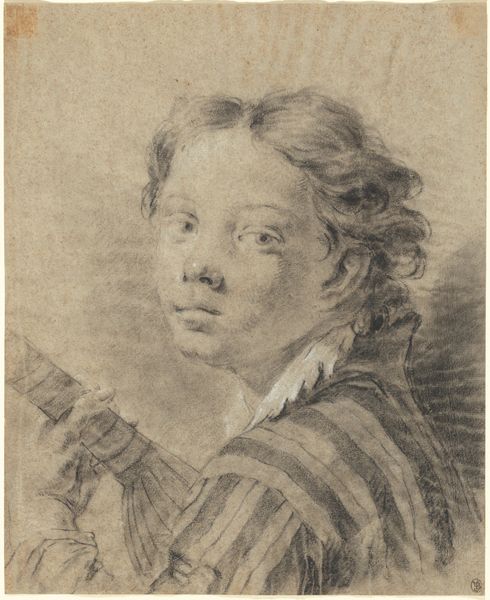
Portrait of Étienne Maurice Falconet (1716–1791) 1741
0:00
0:00
Dimensions: Sheet: 16 3/4 x 13 1/2 in. (42.6 x 34.3 cm)
Copyright: Public Domain
Curator: Upon our right, we have Jean-Baptiste Lemoyne the Younger's "Portrait of Étienne Maurice Falconet," dating from 1741. It resides here at the Metropolitan Museum of Art. Editor: I must say, the soft focus and the gentle play of light give it a rather dreamlike quality, almost melancholic. Is this a pastel work? Curator: Actually, it's primarily a charcoal drawing. The artist does employ red and white chalk for highlights and sanguine accents. It's rather masterful how he achieves such delicacy using these materials. Consider that Lemoyne, from an early age, lived in the shadow of his father, who was a well-known sculptor who trained him at a very young age. Editor: This explains how a drawing achieves that near-sculptural presence. I’m thinking about the subject. There’s something about his gaze... the slight smirk maybe. Is he aware of being looked at, judged, interpreted through our contemporary lens? Or perhaps how his life may influence the revolution some years after? Curator: That is Étienne Maurice Falconet, a very celebrated sculptor himself in the 18th century. There is an established patronage between sculptors, like these two, with close ties to academies, access to resources, and involvement with public life and institutions. It’s easy to interpret his slightly mischievous gaze as a self-assuredness cultivated within that system. Editor: I wonder if he envisioned his legacy being framed in a museum setting such as this, or even known so distantly from its moment in time, especially considering all that followed his era. We also have to appreciate its size. These works were produced by hand for wealthy elites. It also underscores the stark reality that museums as spaces are far from neutral; instead, they are complex sites that reflect societal biases. Curator: True. It brings to light a range of questions. From what perspectives is art appreciated? What constitutes art itself? Editor: It is intriguing to see this piece anew each time, to revisit the narratives surrounding it and re-contextualize it through our present social dynamics. Thank you for your insights. Curator: Indeed. Thank you as well, your contemporary reading really made us question the life of this piece beyond its art historical frame.
Comments
No comments
Be the first to comment and join the conversation on the ultimate creative platform.

